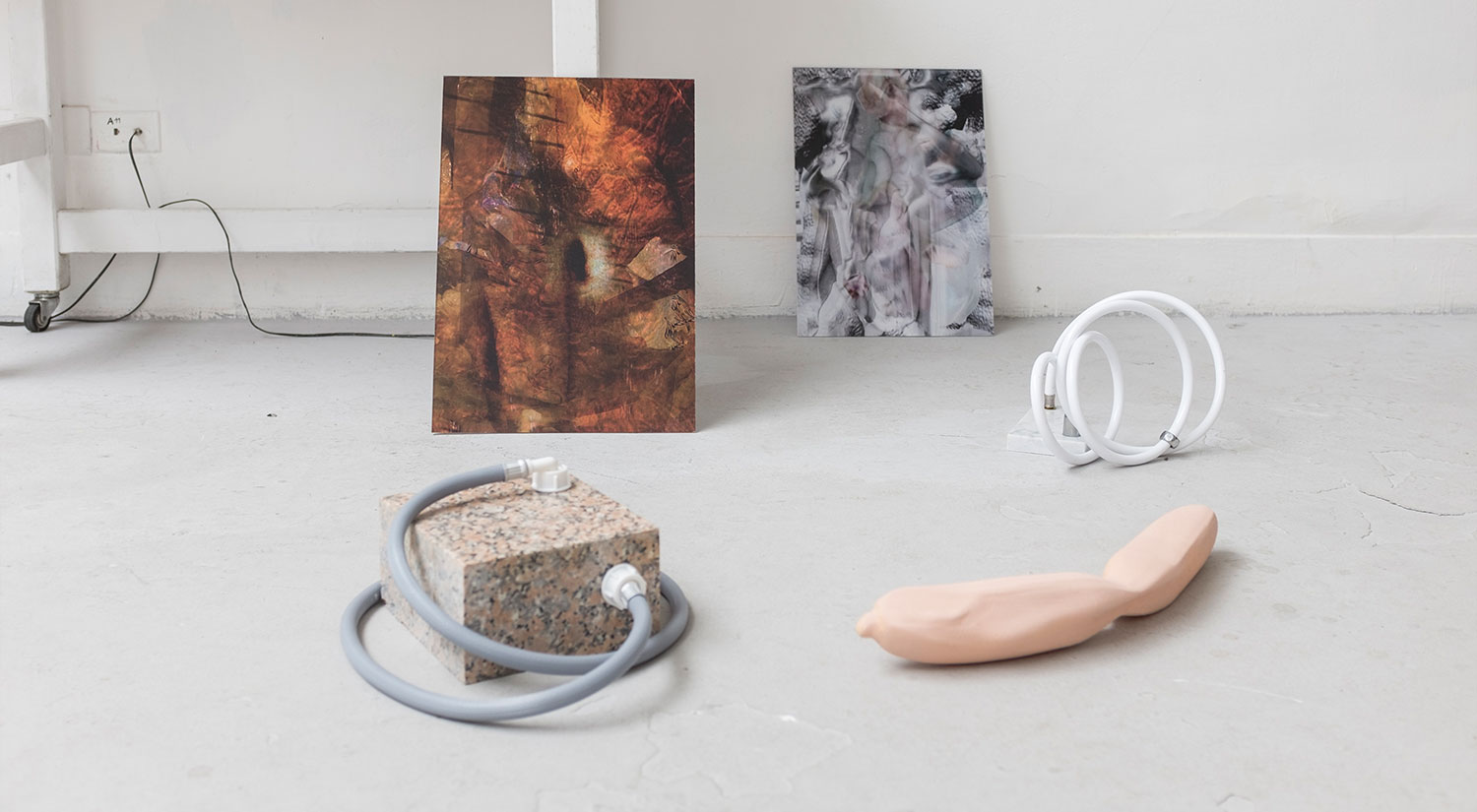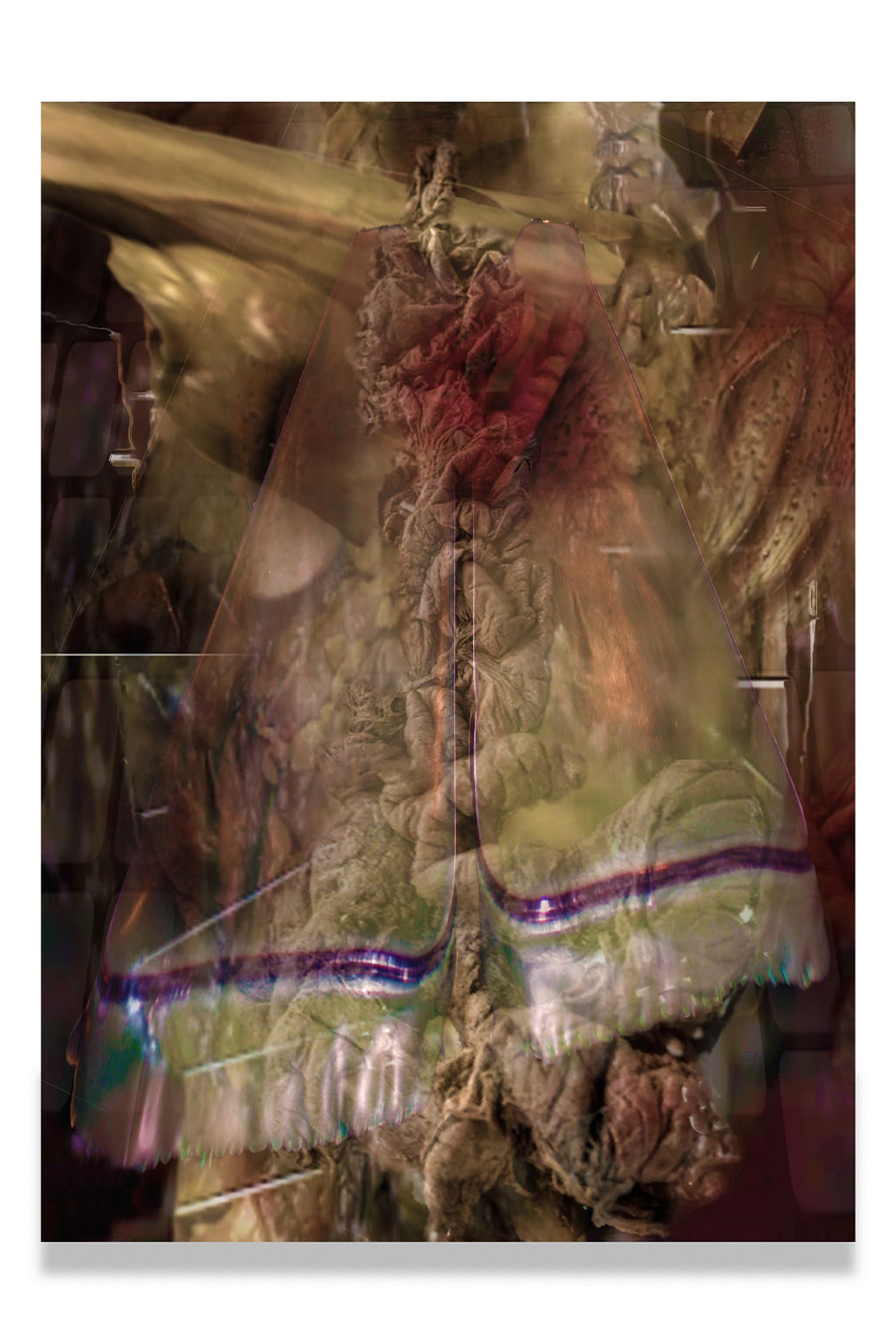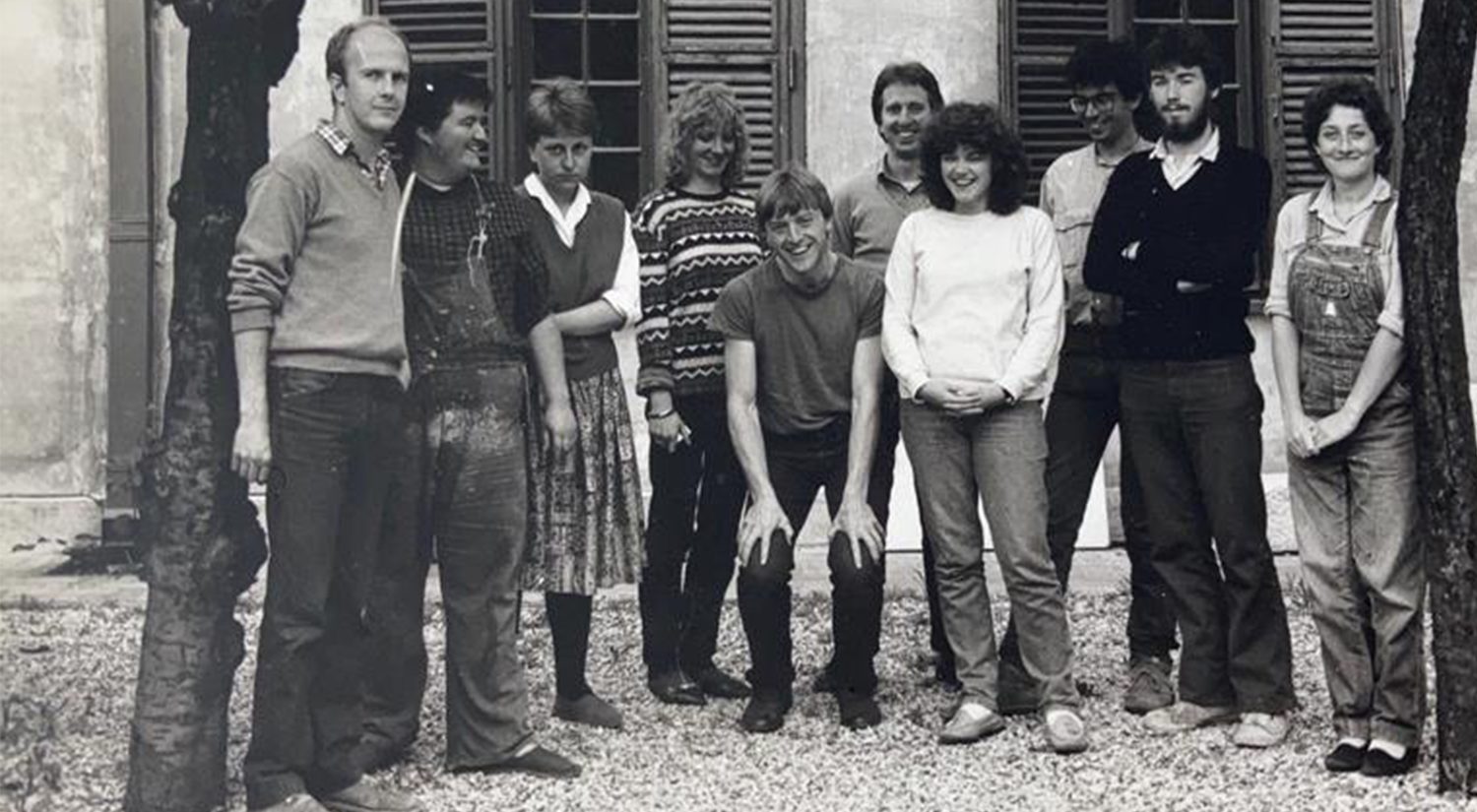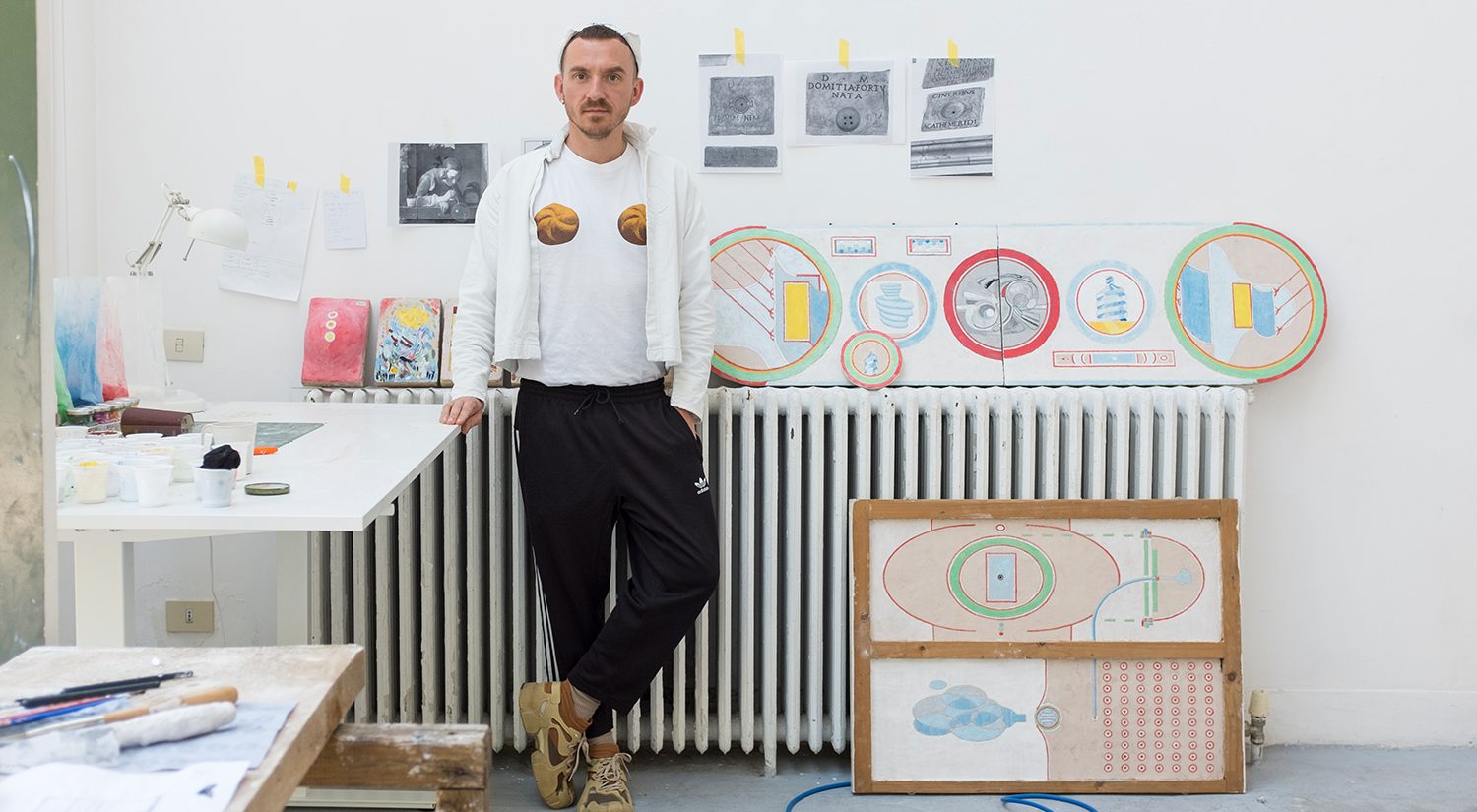An interview with Corey Black, National Art School, Sydney, Resident, in which he speaks about the work he has produced during his residency at the BSR from April–June 2022, ahead of the June Mostra.
The June Mostra opens on Friday 10 June. For more information or to register for the opening night, please see our events page.
You said that in the past few weeks you have begun the early stages of a new project called Body Is Reality. Could you explain what it consists of?
This project has been floating around, atomised in my head, for quite some time. Towards the end of my masters in 2021, I reflected on the myriad of materials I had worked with and began to wonder if there was a way of using the insides of my body to create sculptural forms. The surge of research into the growing amount of microplastics within our bodies spurred me to think – is there a process that exists that could allow us to remove this material and instead of allowing it to pollute the Earth, could we make art out of it, could it become sculptural, like a 21st century fossil? My practice has steadily increased in its range of processes. Since being at the BSR I have utilised new techniques such as 3D printing and traditional, such as moldmaking and casting plaster. The processes I engage with allow for physical experimentation, examining and tweaking new and traditional methods as a way of further processing the world, research, my body and intangible, imperceptible bodies that surround us.
As for the title, it is borrowed but it fits quite well. Its meaning is quite literal – the experience of human beings is being a body, every input and sense constitutes the reality each of us experiences and when the body comes into contact with a galaxy of new, hostile and evocative materials, does that change our reality, therefore changing our world? How does it change and should we invoke that change or attempt to remedy it?
My immediate focal point for exploring these ideas is through our guts, as the source of our immunity and intuition, where alongside the brain, we process a multitude of substances. Specifically, the images I have recently built, having been conceived before my arrival in Rome and continued to be stitched together while here, offer a speculative interior view of divergent consumption processes. In creating images, through found imagery on the internet, I layer, stretch, warp, erase, saturate and blend hundreds of layers in order to mimic the process of information trafficking between infrastructure and between bodies. It also speaks to the constant assault and image saturation we are surrounded by in our daily lives and the process of creating these images is a bit like inverting what I come into contact with everyday, it’s almost like I’m trying to unlearn these images and meditate on them. It feels potent to create these images in Rome as the city itself has a very meaningful palimpsest quality to its streets, where detritus and decaying organic matter rubs up against ancient structures.

Studio view of new works produced during residency
Essentially, they are proposals for new or alternate digestive systems, what our insides might look like in the future. They speculate on new interior terrain as the outcome of ulterior catalysts. Ultimately, being in Rome has greatly aided the growing texture of their completion. The textures of the city are rich and manifold in earthy, bodily tones. Often, it feels as though I am moving through an ancient ruined digestive system as columns, arches, passageways and open spaces chaotically contain and choreograph the flow of bodies, both human and nonhuman, within its walls. The BSR has provided an ample starting point for this project and I am invigorated as to where it may lead, both in terms of further research and creating new objects.

Corey Black, A Bag Of Muscle On A Table Of Stone, 2022, digital print on plexiglass, 34 x 48 cm.
Rome is a city of food and capitalistic consumption. How is this influencing your research at the BSR?
The phrase “you are what you eat” comes to mind, but I think it’s more palpable and less narrow than that; it’s spongy. I think you are what you absorb, in all facets of your body and in all encounters, you’re constantly shifting and changing at every second due to the galaxy of materials that infiltrate your flesh and biome. Having Italian heritage, lots of family activities growing up centered around the preparation and consumption of food. Cooking and eating is a way to decompress, listen to each other and to your own body and to gauge your body’s reaction to what you consume.
I explore this and its relation to the powers that be, because we are literally inhaling, consuming the detritus and remnants of capital – pollutants, microplastics, pesticides, GMOs. Rome offers a vantage point from which to experience this palimpsest of change and evolution. Waste products, both physical and existential, will have a growing effect on our bodies and I am interested in the potential of art to process these eventualities, how we will adapt to them, regulate them, control them or embrace them. N Katherine Hayles speaks of junk as the ‘ideal product’, in that capital is not sold to the consumer, rather the consumer is sold to capital, to the market.[1] The body is an input arena for forces beyond its resilient and fallible confines.
It seems increasingly prescient for art to be able to process these ideas and ideals in order to subvert them, to play with them, manifest new forms and toys. Everything I configure in my practice is process driven. The speeds of the processes I use, their material, political and social content is taken into account and choreographed to speculate on new forms, new embodiments and new knowledge. I conjure and hint at these new forms through plays of materiality, exploring the processes I use in their own right but furthermore, as ways of processing the world, my research, my own body. What is this if not an accidentally engineered gear-shift in the way our bodies will change? Mario Perniola refers to the transformative capabilities of bodies as part of an imaginary science fiction world, where the organic and inorganic, the anthropological and technological, the natural and artificial overlap and blend in one another, this is a core tenet of my practice – to provoke the potential, seductive properties and the awkward, sticky humour within these striations and overlaps.[2]
The body and art are synonymous, it is from the body we create and depict. The body will never fall out of the canon of art purely because it is how we define and navigate the issues of our humanity, it is inexhaustible. But besides that, it is inevitable the body will change, it will mutate and in order to withstand our world it must evolve. This is what interests me in terms of our own potential in the face of the techno world we have constructed. Consumption of food and consumption of capital can be drawn in equivalence – to disrupt and remedy certain ideals and desires, we must engender new ways to digest for new bodies and new realities to materialise.
[1] N. Katherine Hayles, How We Became Posthuman: Virtual Bodies in Cybernetics, Literature, and Informatics, (Chicago: University of Chicago Press, 1999), 42.
[2] Mario Perniola, The Sex Appeal of the Inorganic, (London: Bloomsbury, 2017), 28.

Material study: stones, ancient and newly disrupted











